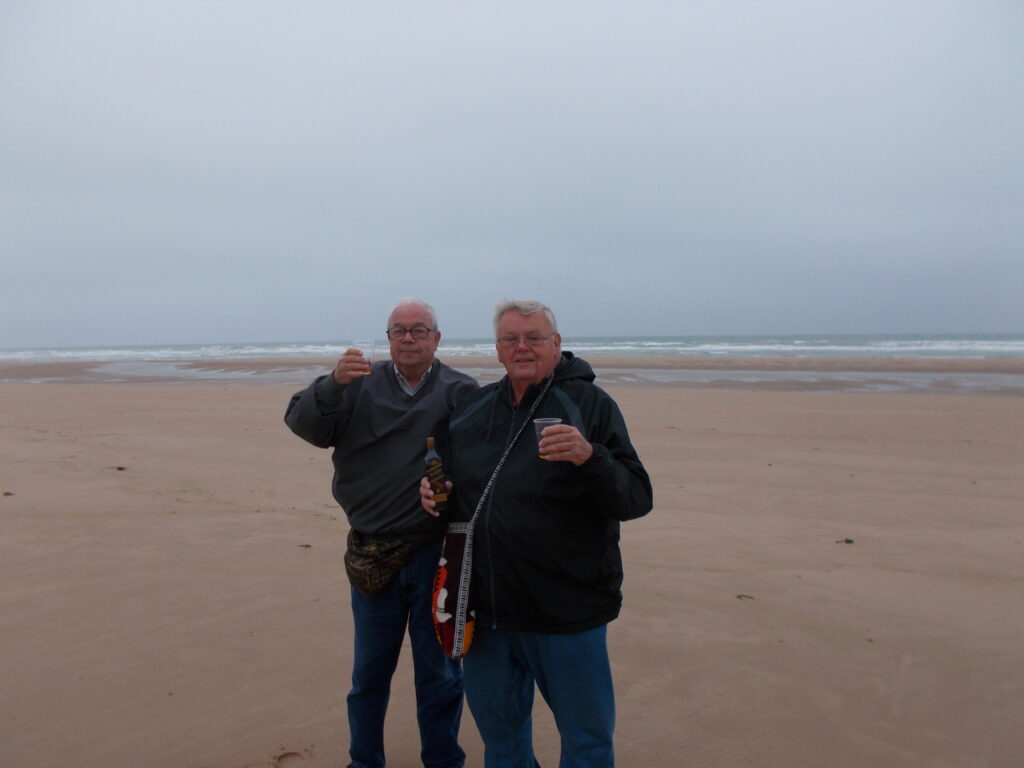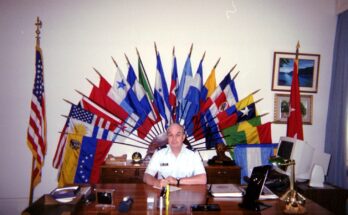
On 22 June, 1941 Germany launched a surprise attack on the Soviet Union, their previous ally. German forces moved rapidly into Russia with their “blitzkrieg”. Soviet forces were initially overwhelmed. Although the United States had not yet entered WWII, President Roosevelt was sending vast amounts of supplies to those countries fighting Germany. Soviet Premier, Stalin, said later that shiploads of Spam kept his troops from starving.
The war in the East lingered on. Stalin pressed the allies to open a “second front” in the West to draw away some of the German troops invading Russia. The western allies had firmly decided that North Africa and the Mediterranean would come first.
On 6 June, 1944 Stalin got his wish. More than 156,000 allied troops hit the beaches in France. Troops from twelve nations. Five beaches along a 50 mile stretch of Normandy were selected for the largest seaborne invasion in history. The U.S. was assigned Omaha and Utah beaches. The British were assigned Gold and Sword beaches and the Canadians were assigned Juno beach.
In spite of poor weather and the chance of even worse weather, General Eisenhower decided to launch “Operation Overlord” on 6 June. One seldom discussed factor in his decision was the condition of our troops. When young men have been honed to the peak of readiness they can not long sit idly. Bad things begin to happen. Morale and conduct deteriorate. They lose their edge.
The troops started ashore at 6:30 AM. It was overcast with cold rain and a chilly wind. The fact that an invasion was imminent could not be hidden from the Germans as a fleet totaling 7,000 ships sat at anchor off the coast of France. What was kept secret was the location of the invasion. Hitler was convinced that the allies would land at Calais, the closest point to England and with a large well-equipped port facility. He continued to believe that the attack in Normandy was a fake and did not commit his heavy forces until after the allied troops were well inland.
The only General to go ashore on D-Day was Brigadier General Theodore Roosevelt, Jr. who led his 20,000 troops at Utah Beach. Utah was found to be lightly defended and the Americans suffered only 200 dead and wounded. General Roosevelt died a few months later in France of a heart attack.
Omaha beach saw 34,000 troops come ashore. Of that number 2,400 were wounded and 800 of those died. The average U.S. soldier at Normandy was 22 years old. A year earlier they were slicking their hair with Brylcreem and chasing the girls. Eight hundred of them would remain 22 years old forever. They rest today at the Normandy American Cemetery just a few hundred yards from where they died. The youngest American in the invasion was 16-year old Joseph Argenzio, Jr. Normandy was only the beginning for the thousands of Americans who pushed ahead till the final victory with Germany’s surrender on 8 May, 1945. Then, as Tom Brokaw said, the “greatest generation” went home to their farms and factories.



